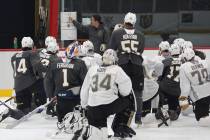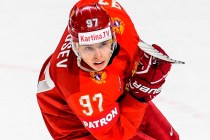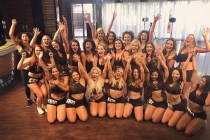Fight Knight: Ryan Reaves perfects the craft of brawling
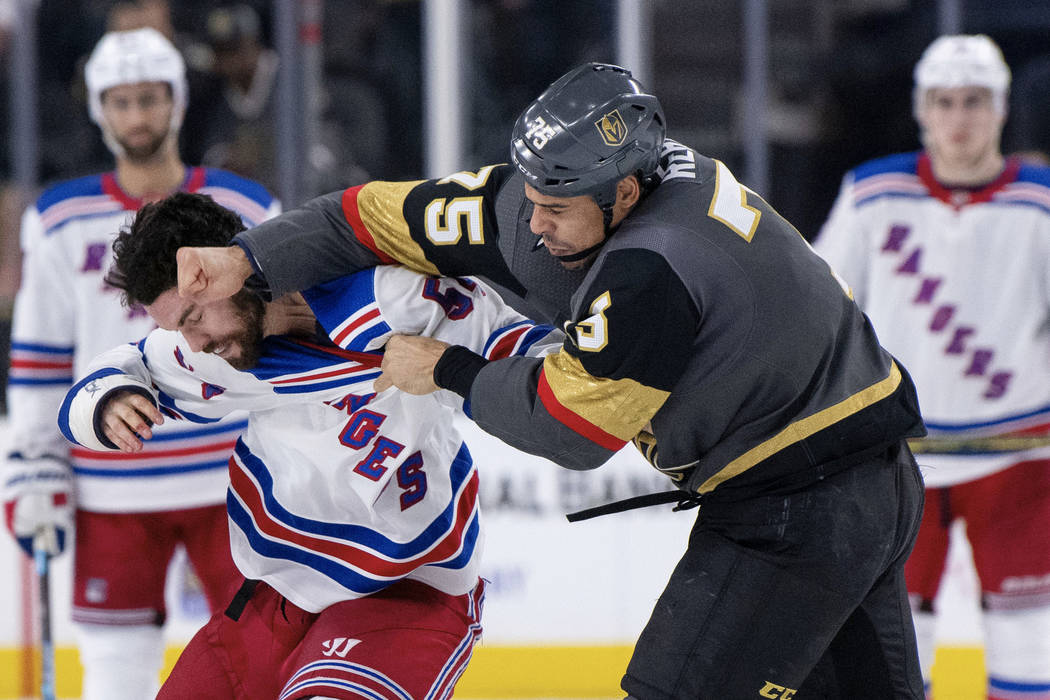

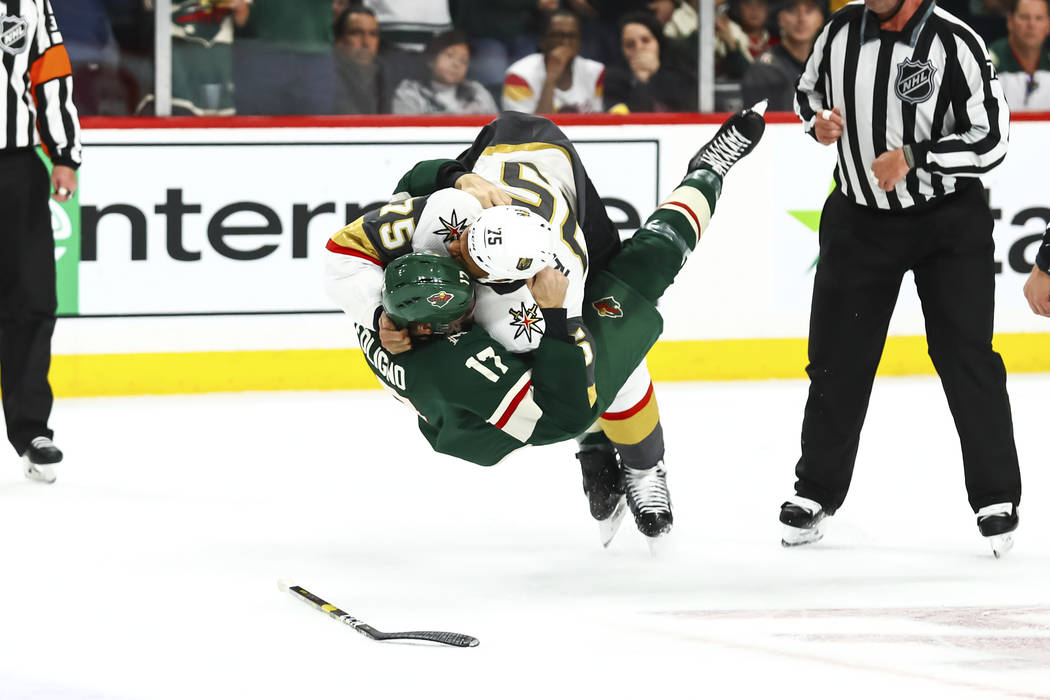
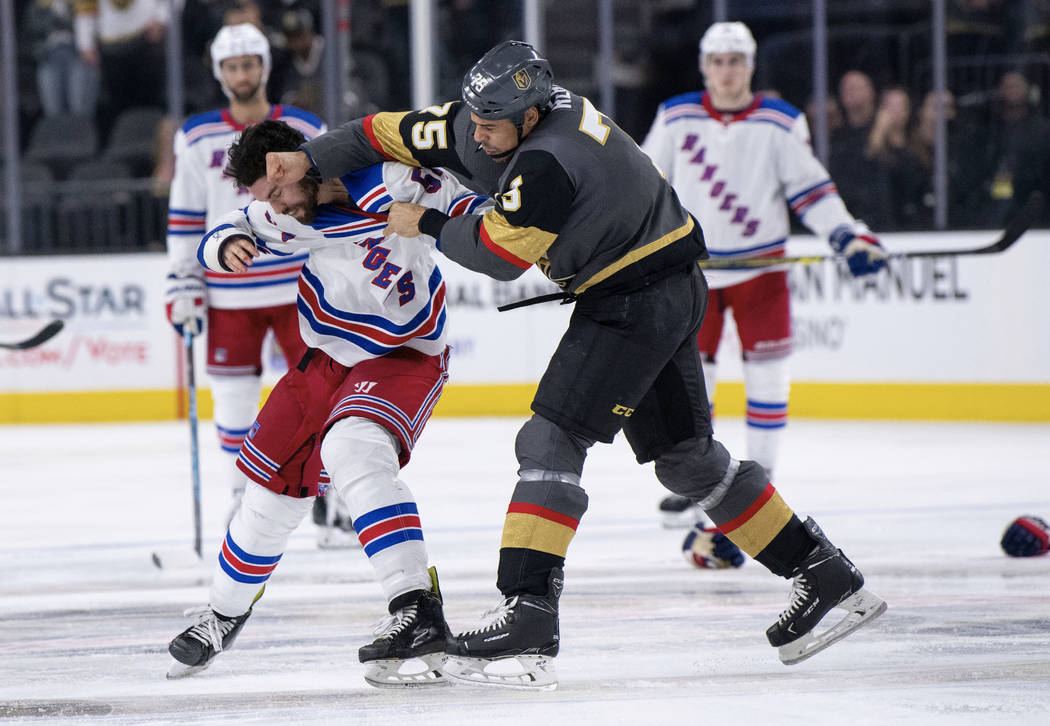
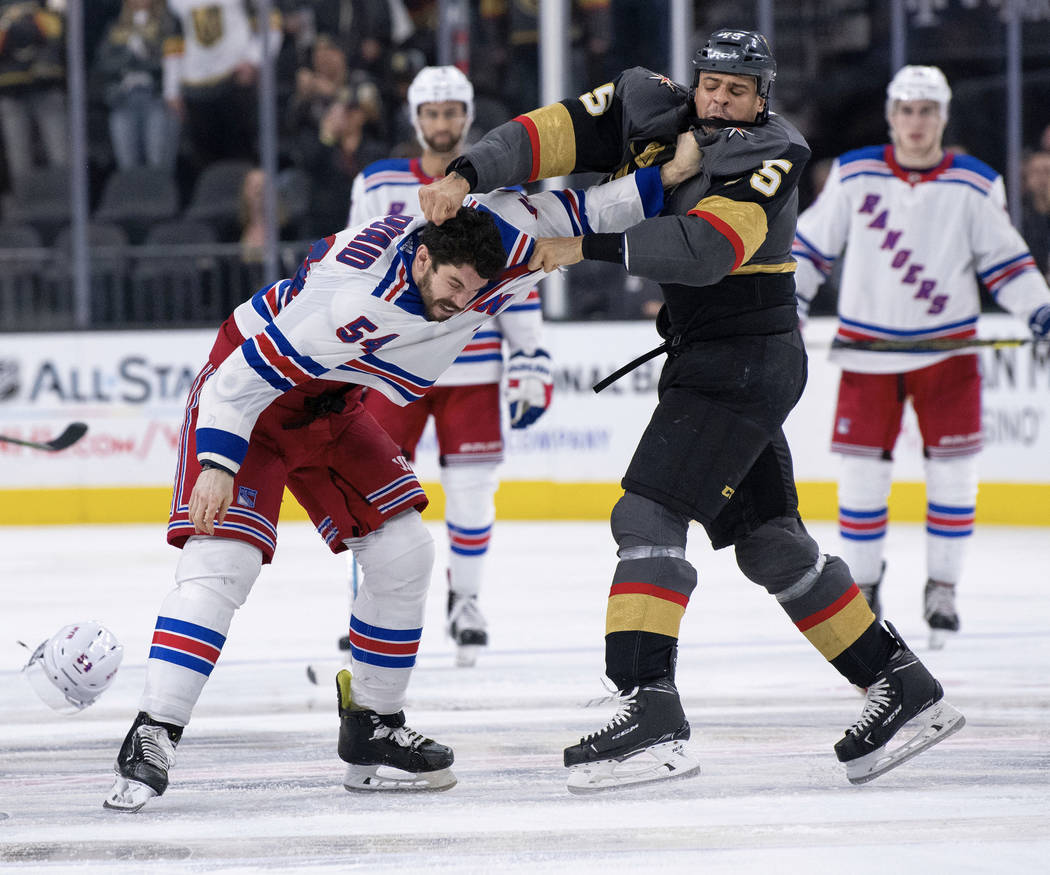
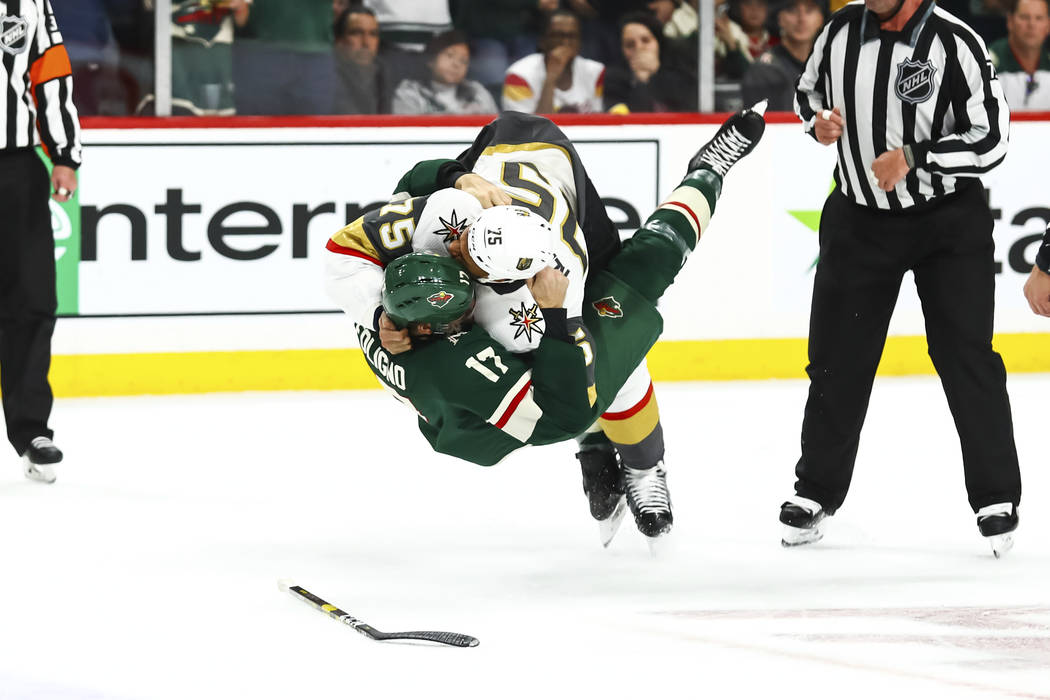
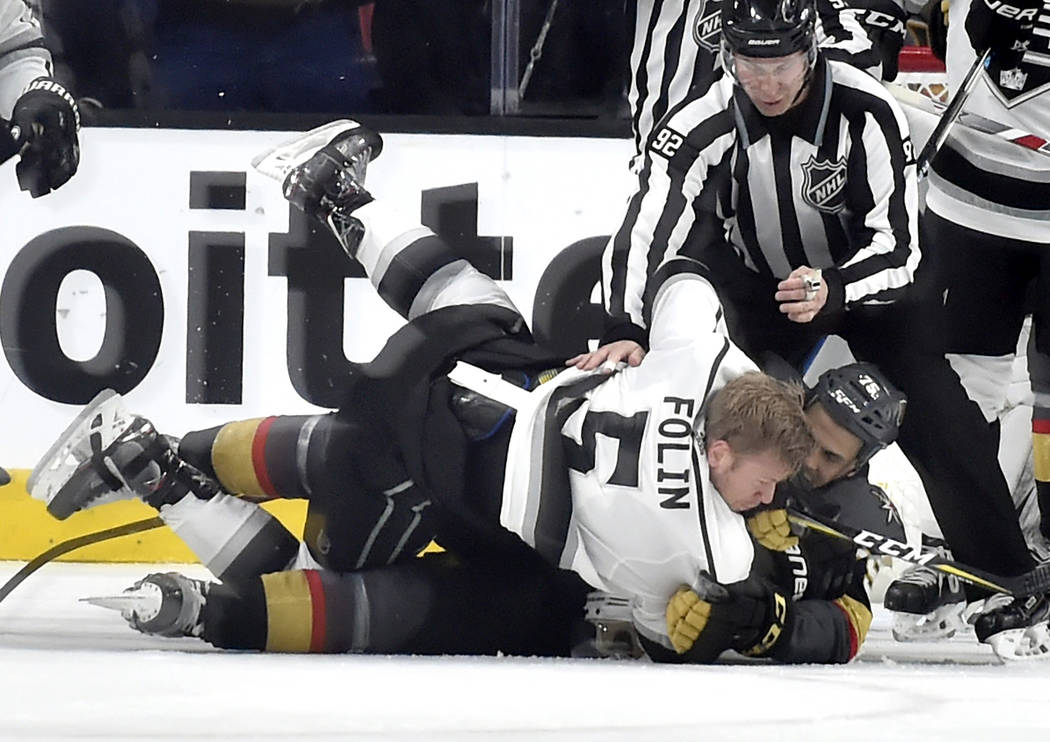
Ryan Reaves took a brief pause from throwing punches and immediately had a series of right hands fired back at him. He circled near center ice with more than 18,000 fans screaming their support and pounding on the glass at T-Mobile Arena.
The momentary break wasn’t an accident. Through all the noise and chaos, a calm and collected Reaves had a plan as he squared off with New York Rangers forward Adam McQuaid on Jan. 8.
“I wasn’t throwing early, because I always want to be in control of what position he’s in and what position I’m in,” Reaves said. “So he had a better grab (of the jersey) to start, and he was throwing and his punches were stopping just short of my face, so that’s when I knew I was fine. I think I kind of missed my first grab, so I was kind of repositioning my hands and his hands. Once I moved him to where I wanted, I had him.”
Reaves adjusted his grip and began unloading right hands until McQuaid was on the ice and Reaves had won the fight.
He usually does.
The Golden Knights forward has established himself as a fan favorite in Las Vegas, and for good reason. He’s an enforcer with a dynamic personality who has blossomed into more than an occasional threat on offense for one of the NHL’s best teams.
It’s as a fighter where he has made his true mark, however. The reputation precedes him, even in his own locker room.
“I wouldn’t fight Ryan, if that’s what you’re asking,” forward Alex Tuch said. “Hell, no. I’d rather get hit by a pickup truck than fight Ryan Reaves.”
Reaves, a 6-foot-1-inch, 225-pounder, never backs down from a challenge, but the same can’t be said for opponents. P.K. Subban of the Nashville Predators quickly vacated the area when Reaves stepped between him and Pierre-Edouard Bellemare in a game last Wednesday.
It’s clear that Reaves is one of the most feared fighters in a league trying to de-emphasize violence. It remains an integral part of the game, however.
“I’m totally into (the fighting),” said Knights defenseman Nate Schmidt, who has been involved in two fights in his NHL career. “It’s awesome. There’s a place for it in the game. I think it’s a good way to self-regulate. I think it’s necessary because guys have to answer for it if they do something stupid. If they didn’t have it, the guys would get away with way too much. You could take liberties against the other team’s top guys and just get a two-minute penalty, and the only recourse would be to whack someone and get another penalty of your own.”
Reaves, 32, is the ultimate regulator, but he wasn’t much of a fighter early in his career. He saw a niche and worked on the craft.
“I spent two very hard summers of boxing, working on technique and the power of my punch,” he said. “It’s a little harder to work on a hockey fight when you’re training with a boxer and not on the ice, but you can learn techniques. The way I grab is something I learned just from doing it in games. It’s something where I saw a little confusion on the guy’s face the first time and knew I was onto something.”
Reaves said he thinks that securing a favorable grip on his opponent with his left hand, and controlling where they grip him, is one of the keys to his success during his 65 career fights in the NHL, a statistic kept at HockeyFights.com.
So is doing his homework, especially before games against other known scrappers.
“If I’ve never seen a guy fight, I’ll watch maybe two of their fights, mostly just to see how they grab and how they throw,” Reaves said. “Some guys come in and try to grab right away, and they want to grab a specific place. Some guys just come in and start throwing heavy rights. I want to know if they’re a lefty, for sure. Some guys come under or over and you have to adjust to that.”
That ability to react is another key to winning a fight, Reaves said. He took the first step forward in the fight against McQuaid, but it wasn’t an aggressive maneuver, as he was just deking to see what McQuaid would do.
“Usually, if you make a quick move, you can tell what their first move is going to be and then adjust earlier than he can,” Reaves said.
It typically leads to winning fights. Reaves has worked his craft to the point that he thinks he’s in the top two in the league, along with the Edmonton Oilers’ Milan Lucic.
The two haven’t fought, but Reaves said he would welcome it.
“If that time comes, that would be interesting,” he said. “I’ve met him a couple times, and we’ve talked about it a little bit. Maybe one day that will happen.”
Reaves does have quite a history with one of the league’s other noted enforcers, Tom Wilson of the Washington Capitals. They have fought twice, and Reaves doled out a hit this season that knocked Wilson out of action with an upper-body injury for three games in December.
“The only time I really know something is going to go down is when we play Washington,” Reaves said. “That’s about it. For the most part, nobody really looks for it anymore. The days of looking up and down the lineup sheet and thinking, ‘That’s somebody I’m going at it with,’ are mostly gone.”
Reaves has learned to enjoy the confrontations and even made friends with some of his foes, including Deryk Engelland, whom he fought three times before they became teammates with the Knights. But it wasn’t always that way.
“I enjoy it a lot more since I learned how to fight properly,” he said. “When I came in the league and especially in the minors, I wasn’t really a fighter. I had 14 in three years in junior. My first year in Peoria, I didn’t really fight at all. Once I kind of learned how to fight and knew I was strong enough to fight with some of the big boys, I started to enjoy it a bit more. I embrace it. It’s the role that got me to the NHL and kind of kept me here for a while.
“I definitely enjoy it.”
Those brave enough to drop the gloves with him don’t have such a pleasurable experience.
More Golden Knights: Follow at reviewjournal.com/GoldenKnights and @HockeyinVegas on Twitter.
Contact Adam Hill at ahill@reviewjournal.com or 702-277-8028. Follow @AdamHillLVRJ on Twitter.
Roughhousing Reaves
Ryan Reaves fighting career by the numbers:
Teams he’s fought against most often
Chicago Blackhawks, 6
Columbus Blue Jackets, 6
Nashville Predators, 6
Calgary Flames, 4
Vancouver Canucks, 4
Players he’s fought most often
Brandon Bollig, 4
Cody McLeod, 3
Jared Boll, 3
Deryk Engelland, 3
Richard Clune, 2
Tim Jackman, 2
Brandon Mashinter, 2
Paul Bissonnette, 2
Tom Wilson, 2
Tom Sestito, 2
Number of fights for each team in his career
St. Louis Blues, 56
Pittsburgh Penguins, 6
Golden Knights, 3
Source: HockeyFights.com
Golden Knights players recall fights
Golden Knights defenseman Nate Schmidt wants it to be known that his 0-2 record as a fighter, according to hockeyfights.com, should come with an asterisk.
“I would say the first one was at the back of the net and J.T. Brown jumped me,” Schmidt said in breaking down his two fights in the NHL. “(Max) Domi never hit me. The three punches he threw never hit me, then I threw one and knocked him over and I get the loss. I would give myself an 0-0-2.”
The fans who vote on the popular website that celebrate fights disagree, but Schmidt doesn’t plan to try to get rid of the zero in the win column.
“I don’t lose any sleep over my 0-2 record,” he said. “If it happens, it happens. Sometimes they just come up. I had a couple fights in juniors, and that’s the way it went down. I’ve only had one premeditated one, and I won that one.”
Forward Alex Tuch has had one fight in an official game, but he was involved in two rookie game scraps.
In the one that counted, Tuch was scored a loser by voters when he exchanged fisticuffs with Calgary’s Travis Hamonic last season.
“That was just heat of the moment,” Tuch said. “We were both in each other’s faces, and he said, ‘You want to go?’ I was just like, ‘Yeah, we might as well.’ I think I was due for my first fight. I’m not afraid to drop (the gloves). There’s always a time and place. I grew up doing boxing. My dad had this idea that if you’re going to play hockey, you might have to fight. You might have to stand up for your teammates at some point. That’s the big thing, is sticking up for your teammates.”
Tuch said if someone issues a challenge on the ice and drops his gloves, the fight is almost inevitable, even if he’s not feeling it.
“It depends on the guy, but most likely you’re going to have to drop them,” he said. “It depends on the situation in the game, too. It depends on if you hit someone or someone hits one of your teammates. Sometimes you just have to answer the bell.”
Adam Hill Las Vegas Review-Journal




